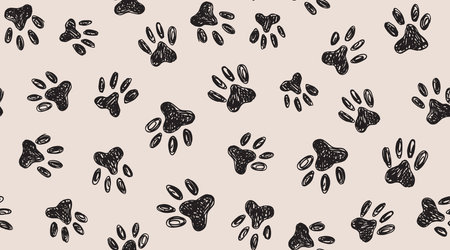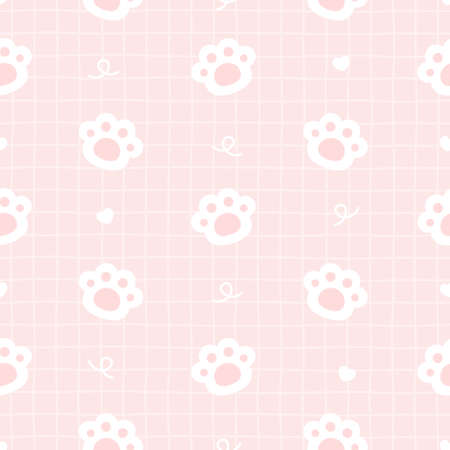1. Understanding Your Cat’s Love for Soft Fabrics
Cats have a natural affinity for soft fabrics and cozy textures. If you’ve ever noticed your cat gravitating toward a plush blanket, a fleece-lined bed, or even your favorite sweater, it’s not just a coincidence. Their love for these materials is deeply rooted in their instincts and need for comfort.
Instinctual Need for Warmth
Cats are naturally drawn to warmth, and soft fabrics provide excellent insulation. In the wild, cats seek out warm, enclosed spaces to conserve body heat, and this instinct carries over into domestic life. Materials like fleece, wool, and plush microfiber help retain body heat, making them ideal surfaces for your cat to curl up on.
Comfort and Security
Soft textures give cats a sense of security and relaxation. The gentle feel of certain fabrics mimics the warmth and softness of their mother’s fur, creating an environment where they feel safe. This is why many cats knead blankets before settling down—it’s a comforting behavior linked to kittenhood.
Why Do Cats Prefer Some Fabrics Over Others?
Not all fabrics are equally appealing to cats. Some materials offer more warmth and softness than others, influencing their preferences. Below is a comparison of different fabrics and how they appeal to feline friends:
| Fabric Type | Why Cats Love It |
|---|---|
| Fleece | Soft, warm, and retains heat well |
| Wool | Mimics the texture of fur; provides warmth |
| Cotton | Soft but breathable; comfortable for lounging |
| Satin/Silk | Smooth but lacks warmth; some cats may like the texture |
| Synthetic Blends | Varies in softness; some may not be as cozy as natural fibers |
The Role of Texture in a Cat’s Living Space
Your cats environment plays a big role in their overall comfort. Providing different soft surfaces throughout your home can encourage relaxation and reduce stress. Consider placing fleece-lined beds in their favorite resting spots or adding a plush blanket to areas where they tend to nap.
2. How Texture Impacts Your Cat’s Well-Being
Cats are highly sensitive to textures, and the surfaces they interact with daily can significantly affect their stress levels, physical comfort, and overall happiness. By understanding how different materials impact your cat’s well-being, you can create a home environment that makes them feel safe and content.
Soft vs. Rough Textures
Fabrics and textures play a crucial role in how comfortable your cat feels in their surroundings. Some materials provide a sense of security, while others may be irritating or uncomfortable. Below is a comparison of soft and rough textures and their effects on cats:
| Texture Type | Examples | Effects on Cats |
|---|---|---|
| Soft Textures | Fleece, velvet, plush blankets | Provides warmth, comfort, and a sense of security; helps reduce stress |
| Smooth Textures | Cotton sheets, microfiber fabric | Mildly comfortable but may not provide as much warmth or coziness |
| Rough Textures | Burlap, coarse wool, textured rugs | May feel irritating or unpleasant; some cats avoid these surfaces |
The Connection Between Texture and Stress Levels
Cats often seek out soft, warm surfaces when they feel anxious or need a place to relax. If your cat frequently kneads or burrows into blankets, its a sign they find comfort in certain textures. Providing cozy areas with plush fabrics can help reduce stress and encourage relaxation.
Sensitive Paws and Preferred Surfaces
A cat’s paw pads are extremely sensitive to texture. While some enjoy lying on smooth fabrics like cotton, others prefer the softness of fleece or faux fur. If your cat avoids certain areas in your home, it may be due to discomfort caused by rougher materials.
Selecting the Right Fabrics for Your Cat
If you want to enhance your cat’s daily comfort, consider incorporating a variety of soft textures in their favorite resting spots. Plush blankets, cushioned bedding, and fleece-lined furniture covers are all excellent choices to make your home more inviting for your feline friend.

3. Best Fabric Choices for Your Cat’s Comfort
Choosing the right fabrics for your cat’s furniture, bedding, and accessories can make a huge difference in their comfort and overall well-being. Soft, cozy materials help create a soothing environment where your feline friend can relax and feel secure. Below are some of the best fabric choices to consider when designing a cat-friendly space.
Cotton: Breathable and Easy to Clean
Cotton is a great option for cat bedding and covers because it’s soft, breathable, and easy to wash. It also helps regulate temperature, keeping your cat cool in summer and warm in winter.
Fleece: Warm and Cozy
If your cat loves warmth, fleece is an excellent choice. It’s ultra-soft and retains heat well, making it perfect for blankets, beds, and cushions.
Microfiber: Durable and Stain-Resistant
Microfiber is a fantastic option for furniture upholstery because it’s soft yet highly durable. It resists stains and is easy to clean, making it ideal for households with cats.
Sherpa: Ultra-Soft for Maximum Comfort
Sherpa fabric mimics the feel of real fur, providing extra warmth and comfort. Cats love kneading and curling up on sherpa-covered surfaces.
Comparison of Cat-Friendly Fabrics
| Fabric Type | Benefits | Best For |
|---|---|---|
| Cotton | Breathable, easy to clean, regulates temperature | Bedding, cushion covers |
| Fleece | Warm, soft, retains heat well | Blankets, beds |
| Microfiber | Durable, stain-resistant, pet-friendly | Sofas, furniture covers |
| Sherpa | Mimics fur texture, ultra-soft, cozy | Pillows, cat caves |
4. Incorporating Soft Fabrics Into Your Home
Creating a cozy and stylish home that also caters to your cat’s comfort doesn’t have to be complicated. By thoughtfully incorporating soft fabrics and textures into your décor, you can provide relaxation spots for your feline friend without sacrificing aesthetics.
Choosing the Right Fabrics
Not all fabrics are created equal when it comes to durability and comfort for both you and your cat. Consider these options:
| Fabric Type | Benefits |
|---|---|
| Fleece | Soft, warm, and easy to clean |
| Cotton | Breathable and comfortable year-round |
| Velvet | Luxurious feel but may attract fur |
| Microfiber | Durable, stain-resistant, and pet-friendly |
| Sherpa | Ultra-soft and ideal for cozy napping spots |
Practical Ways to Add Soft Textures
Cushions & Throw Blankets
Drape plush throw blankets over sofas or chairs, giving your cat an inviting place to curl up. Choose machine-washable materials for easy maintenance.
Padded Cat Beds & Window Perches
Add soft cushions or fleece-lined beds in their favorite lounging areas. A padded window perch lets them bask in the sun while staying comfortable.
Rugs & Carpets with a Cozy Feel
A soft area rug provides a warm surface for lounging while adding texture to your space. Opt for low-pile rugs that are easier to clean.
DIY Cozy Spots with Fabric Scraps
If you have extra fabric, consider making small cushioned mats or covering cardboard boxes with fleece for an inexpensive, comfy hideout.
Balancing Style and Functionality
You don’t have to compromise style when integrating cat-friendly fabrics into your home. Stick to neutral tones or patterns that blend seamlessly with your décor while prioritizing washable and durable materials.
Final Tip: Rotate Soft Fabrics Regularly
Cats love variety! Switching out blankets or cushions occasionally can keep their environment fresh and interesting while maintaining cleanliness.
5. Caring for Soft Fabrics in a Cat Household
Keeping soft fabrics clean and well-maintained in a home with cats can be challenging, but with the right approach, you can ensure their durability and keep your space fresh and hygienic. Here are some practical tips to help you care for your cat-friendly fabrics.
Regular Cleaning to Remove Fur and Dander
Cats naturally shed fur and dander, which can accumulate on soft surfaces. To keep fabrics clean:
- Use a lint roller or pet hair remover daily on couches, beds, and blankets.
- Vacuum upholstered furniture and rugs at least twice a week.
- Wash fabric covers, throws, and cushion cases regularly using pet-safe detergent.
Preventing Stains and Odors
Accidents happen, but quick action can prevent lasting stains and odors:
- Blot spills immediately with a clean cloth—avoid rubbing.
- Use an enzyme-based cleaner to break down pet-related stains.
- Baking soda sprinkled on fabrics overnight can help neutralize odors.
Selecting Durable and Easy-to-Clean Fabrics
If youre choosing new furniture or textiles for your home, opt for fabrics that resist wear and are easy to clean. Below is a comparison of common fabric types:
| Fabric Type | Durability | Ease of Cleaning |
|---|---|---|
| Microfiber | High | Easy—resists stains and fur |
| Cotton | Medium | Moderate—machine washable but absorbs stains |
| Velvet | Low | Difficult—attracts fur and requires special cleaning |
| Synthetic Blends | High | Easy—resistant to wear and pet damage |
Protecting Fabrics from Scratching and Clawing
Cats love to knead and scratch soft surfaces. To protect your furniture:
- Provide designated scratching posts near favorite lounging spots.
- Cover vulnerable areas with washable slipcovers or furniture protectors.
- Keeps claws trimmed to minimize damage.
Maintaining a Fresh and Healthy Environment
A clean home benefits both you and your cat. To maintain freshness:
- Avoid strong-smelling cleaners—opt for pet-friendly options.
- Airing out rooms regularly helps reduce trapped pet odors.
- Launder bedding, including your cat’s favorite blankets, frequently.


